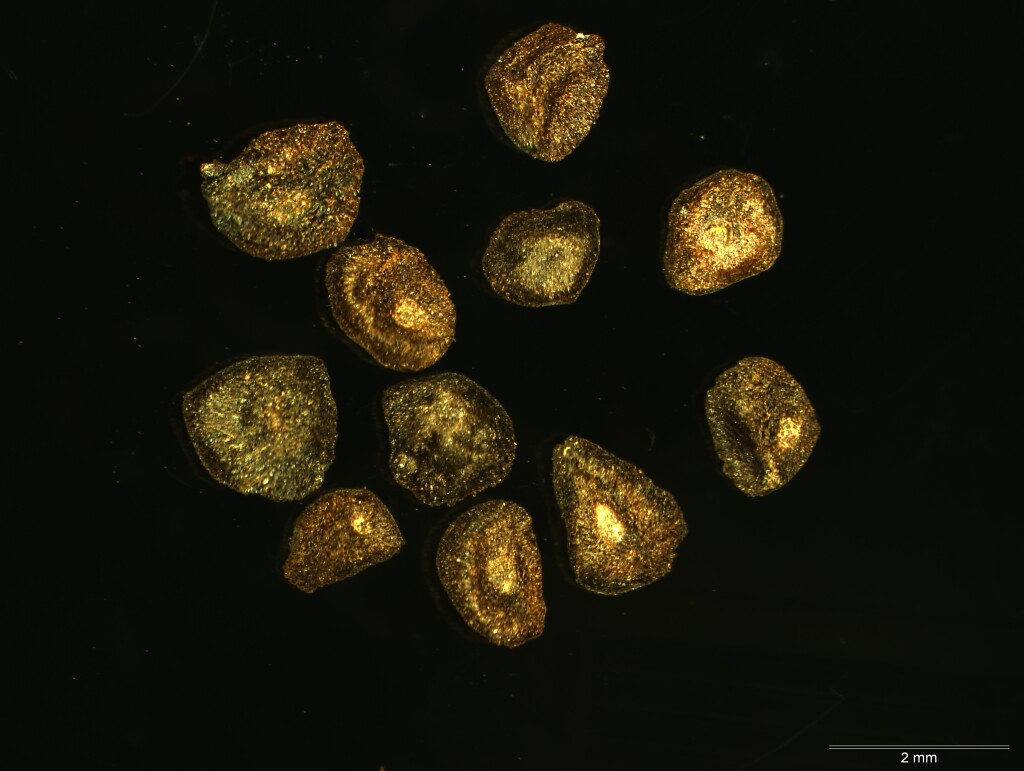Eucalyptus pyrenea
RuleTree to 18 m tall; bark smooth, grey or white above, with some thin, rough bark on lower part of trunk. Juvenile leaves sessile, opposite for many pairs, ovate to elliptical-ovate, to 13 cm long, 9 cm wide, discolorous, glossy, blue-green above; adult leaves petiolate, alternate, lanceolate, 12–25 cm long, 2–3.4 cm wide, concolorous, glossy, green, reticulation dense, with numerous island and intersectional oil glands. Inflorescences axillary, unbranched; peduncles slender, flattened, to 1.6 cm long, 7-flowered; buds shortly pedicellate, ovoid-cylindric with conical operculum, angle often continuing from pedicel along hypanthium, to 0.8 cm long, 0.4 cm diam., scar present; stamens irregularly flexed; anthers dorsifixed, oblong; ovules in 4 vertical rows; flowers white. Fruit pedicellate, cylindric to truncate-ovoid, to 0.6 cm long, 0.6 cm diam.; disc descending; valves 3 or 4, rim level or below; seed dark brownish-black, flattened-ellipsoid, shallowly reticulate, hilum ventral.
Gold. Apparently restricted to the Pyrenees Ranges, west of Avoca, growing on dry rocky slopes.
Previously included in Eucalyptus cypellocarpa or E. alaticaulis, and closely resembles E. litoralis. Generally distinguished from these species by the smaller fruits and relatively broad, blue-green juvenile leaves. It can be further distinguished from E. cypellocarpa by its smaller habit and slightly more persistent bark, and seedling stems that are distinctly winged (also see note under E. litoralis).
 Spinning
Spinning